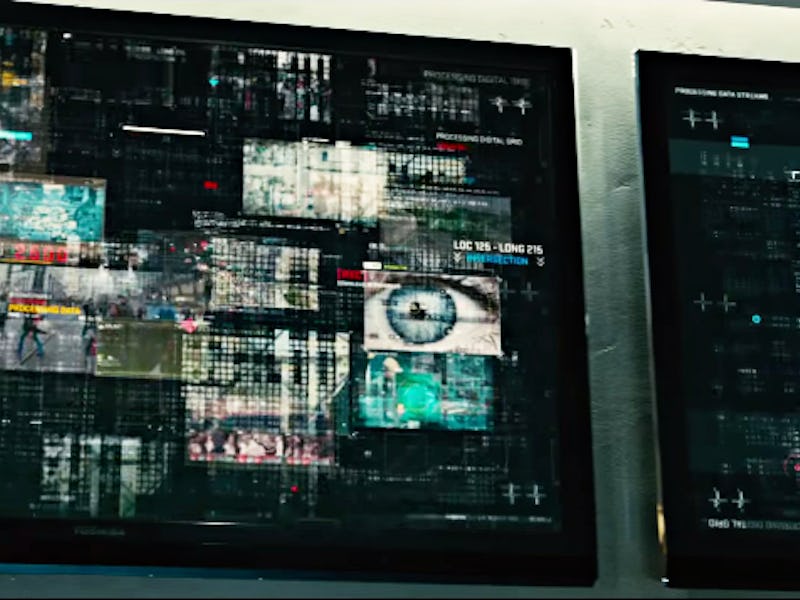The God's Eye From 'Fate of the Furious' Is a Bit Ridiculous
'I should think the NSA has cheaper ways'

The “God’s Eye” is a perfect symbol for how unbelievable the Fast & Furious films have become as the franchise has worn on. An all-seeing, all-processing hacker’s delight, the gadget resurfaces in Fate of the Furious as a handy tool to locate Toretto and Cipher. It’s not as visually impressive as the ghost plane or car hacking scenes, but whereas those two actually contained an element of believability, the God’s Eye throws all of that out the window.
First, a reminder. The God’s Eye, a hacking device created by Ramsey, first made an appearance in Furious 7. It can hack any technology that uses a camera in under four minutes or less, and it’s used to locate any person anywhere in the world. It works best, however, when it’s closest to its target.
Where the idea starts to fall apart is how the God’s Eye can process information from cameras stretching wide distances. Ramsey may be a respectable hacker, but what’s essentially being proposed here is right now not realistic.
“Is it possible to process all the video feeds created by every camera in the world in real time? No, not feasibly,” David O’Gwynn, assistant professor at Belhaven University’s computer science department, tells Inverse.
Robert Graham, a cyber security expert for Errata Security, agreed. While the Mirai malware discovered in August 2016 showed it was possible to take control of a large number of internet-connected cameras, it’s a bit of a logic jump to suggest that all cameras could be compromised.
“Most security cameras are behind firewalls, and can’t be reached,” Graham said in a recent blog post. “Building a ‘God’s Eye’ view of the world, to catch a target every time they passed in front of a camera, would therefore be unrealistic.”
It's watching your every move, but is CCTV relaying it back to the God's Eye?
The other reason why the God’s Eye doesn’t make sense is because it’s not clear why anyone would bother inventing it. Security agencies won’t spend billions to develop a device that can hack every single camera in existence, just on the off-chance that your target happens to be walking past a single camera. It’s much easier to pay for some old-fashioned intelligence.
“I should think the NSA has cheaper, less ‘moonshot,’ ways of finding that kind of information,” O’Gwynn says.
Graham does note, however, that this could change in the future. If more surveillance companies move their infrastructure to the cloud, it’s a case of hacking a few companies rather than a multitude of cameras. That reality is a few years away, though.
There’s also the caveat that the God’s Eye works best when it’s close to its target. That leaves the vague possibility that Ramsey developed something really efficient.
“If you could constrain the amount of video to just those cameras within a small area around the known location of a non-moving target, and you had already previously owned every device within that area, and those devices had connectivity, then yes, you could do what the “God’s Eye” purports to do,” O’Gwynn says.
Much like its name suggests, the God’s Eye plays a rather useful role as a deus ex machina device, but you don’t need to worry about that level of tracking just yet.